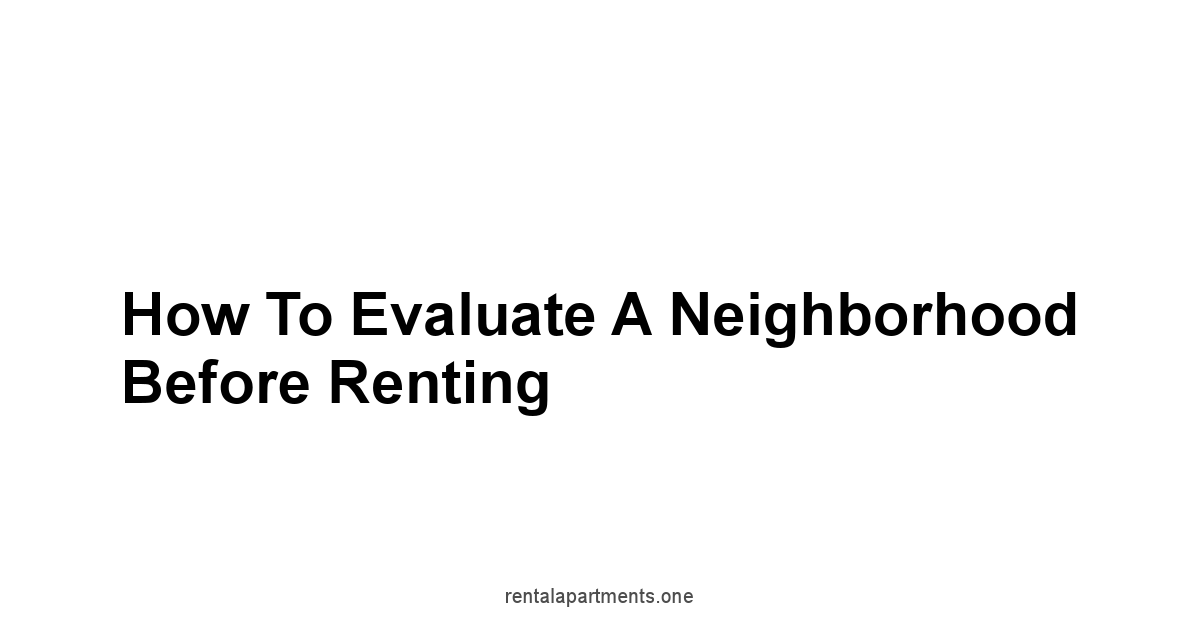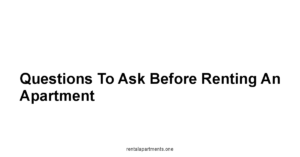Evaluating a neighborhood before renting isn’t about finding the perfect postcard picture, it’s about the real rhythm of the streets, the hum of life, the feeling you get when your feet hit the pavement—it’s about finding the place where you can truly settle.
About 15% of renters move due to neighborhood dissatisfaction, a statistic that underscores the importance of looking beyond the glossy apartment listing, because what looks good on the surface can often mask deeper issues.
Forget the staged photos online and instead, walk the streets and observe, and listen, and feel, like when you meet a person for the first time.
The sidewalks—are they smooth or will your daily walk turn into an obstacle course? Are the streetlights all working, or is it a place that goes dark after dusk? Over 60% of renters consider street maintenance a key factor when choosing a place.
A clean, well-kept street is a reflection of community pride, or, if the bins are overflowing and there’s trash everywhere, it tells a story of neglect.
It’s as crucial to your well-being as the roof over your head. Then, close your eyes.
What’s the soundtrack of the place? Is it the soft murmur of neighbors or the relentless roar of traffic and construction? Constant noise is a mood killer—studies show that prolonged exposure to high levels of noise can impact both mental and physical health.
Visit at different times of the day—weekday, weekend, and even at night—because the rhythm of a neighborhood shifts with the sun and you have to know if its tempo fits with your personal needs.
As you check out the houses around, don’t just glance, scrutinize: Are the yards tended or do the exteriors show care, or does the place seem to be falling apart? A well-maintained home shows that people care about the place they call home, and this often translates to how safe, and pleasant the neighborhood will be.
Green spaces—parks, trees, paths—aren’t just about having a place to walk the dog, they are the lungs of a place, where you can breathe, they affect the overall feeling of the place and studies show people living near green spaces show higher levels of well-being.
Now, let’s dig into the facts.
Walkability is key—can you get your groceries without having to get into a car? A walkable neighborhood is a vibrant one.
A higher walkability score, often translated into a better day-to-day living experience, means you’re more connected to a community.
Check out the sidewalks and the crosswalks, you’re not just looking for a destination, but for an experience.
Public transport—if you don’t have a car, it’s the heart of your routine. Check those bus and train times and routes.
Check their frequency, because it is important to know how easy it is to go everywhere you need to go in the city. And for the folks with a car—parking.
Is it a free-for-all or is it limited street parking only? A hassle to park each day can turn a perfect place into a problem.
Safety first—check crime stats, and see if the streets are lit up at night, and more importantly, trust your gut feeling about the place, a safe neighborhood is when you can relax and feel at peace when you are laying your head at night.
Consider the local schools, even if you don’t have kids, because good schools often mean a strong community, and that impacts all the residents, and it also increases the property value of an area.
The soul of a neighborhood is its people and culture, not just the streets.
What local businesses fill the streets? Are these places easy to reach on foot? Are they a mix of local stores or big chains? Community events are when a neighborhood comes to life—festivals, street fairs, they show you how involved the residents are in their community, and the more the events, the more connected the place will be.
Demographics matter: are the people young professionals, families, or an older group, and does the mix feel like something you are looking for? And the best part, talk to the people who live there. They are the best source.
They know the ins and outs and will give you the best and unfiltered take on living there.
Finally, live the experience. Visit at different times.
Mornings, afternoons, and weekends are all different stories.
Walk it, bike it, eat in its local spots, take it all in with all your senses, not just looking but listening, smelling, feeling. This is how you know if the place is a good fit.
This, the hard facts and the gut feelings are the key to finding the neighborhood that is right for you. It’s not just a house, it’s a home.
Checking the Vibe: First Impressions Count
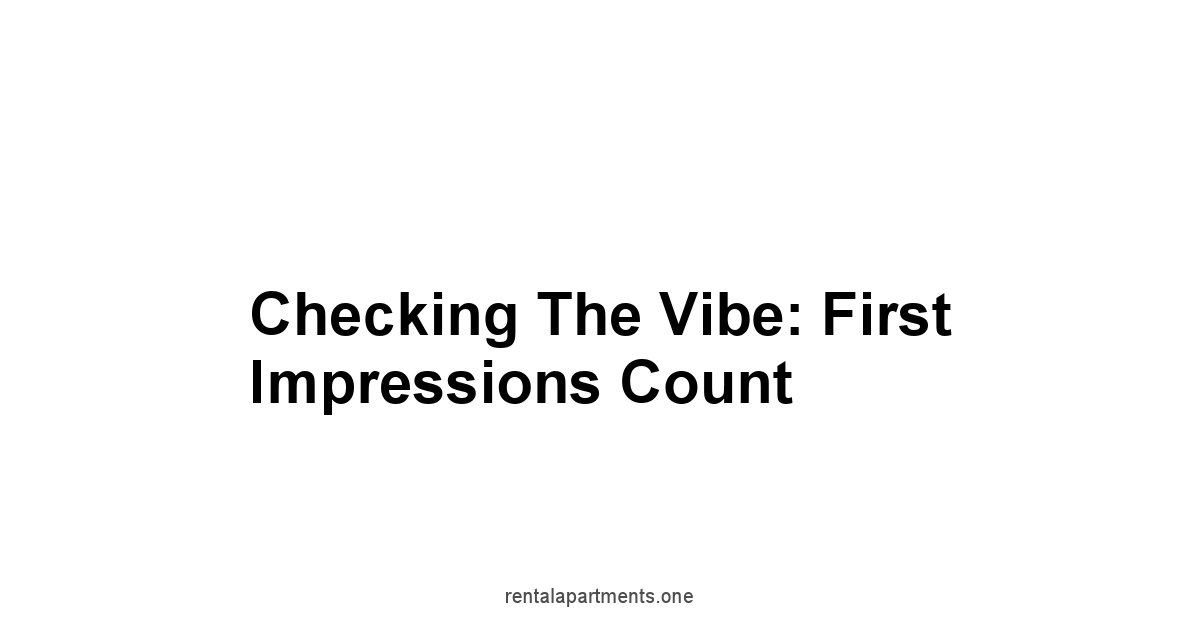
First impressions, they’re like a good punch—they hit you hard and leave a lasting mark.
When you’re sizing up a neighborhood, it’s not about the pretty pictures online, it’s about the grit of the street, the hum of the place itself. You need to feel it, sense what it’s really like.
Don’t just look at the house, look at the street, the air, the way the light falls.
A place can look great in a photo, but you want to know how it feels to be there. That’s the real story.
It’s like when you meet a person, you get a sense about them fast. It’s the same with a neighborhood.
You’ve got to get out there, see what’s really happening, not just what someone wants you to see.
This is where you’ll be living, where you’ll lay your head down at night. Make sure the feeling fits.
This first look is more important than most folks think, it’s the gut check before you start digging into the details. Trust it.
Street Condition and Upkeep
The street, it tells a story.
Cracks in the pavement, overflowing bins, they’re like the first lines of a book, they tell you what’s happening. Take a walk, see the details.
Are the sidewalks easy to navigate, or will you be dodging potholes every day? A well-kept street often means a well-kept neighborhood. It shows pride.
Look for the little things: Are the streetlights working? Do the gardens look tended to? The way people care for the street is a reflection of how they care for where they live.
It’s not about fancy landscaping, it’s about the simple acts of maintaining what is.
A broken curb here, a pile of trash there, it’s a signal.
It’s not just aesthetics, it’s about respect and community. A neglected street can mean a neglected community.
- Sidewalks: Are they in good repair, free from cracks and obstructions?
- Roads: Are there potholes or significant damage?
- Trash: Are the bins overflowing, or is the area clean?
- Streetlights: Are they functioning?
- Landscaping: Is there evidence of basic upkeep?
- Overall Impression: Is the street clean and well-maintained or does it feel run-down?
| Feature | Good | Concerning |
|---|---|---|
| Sidewalks | Smooth, even surfaces, few obstructions | Cracked, uneven, many obstacles |
| Roads | Smooth surfaces, minimal potholes | Numerous potholes, significant damage |
| Trash | Clean, bins emptied regularly | Overflowing bins, litter present |
| Streetlights | All functioning properly | Many are out, area feels dark |
| Landscaping | Well-maintained, trimmed greenery | Overgrown, neglected plants |
| Overall | Clean, maintained, cared-for feel | Dirty, run-down, neglected feel |
Noise Levels: Day and Night
Noise, it’s more than just sound. It’s the rhythm of the place.
You need to know if it’s a jazz beat or a drum solo you can’t escape. During the day, a little bit of hum is normal. But at night, you want peace.
Listen carefully to the sounds of the place at different times.
A busy street during the day might be quiet at night, or it might not.
Think about the sounds you don’t want to hear.
Constant traffic, construction, loud neighbors – these can drive a person crazy. The sound of a place affects your mood. It’s not just about volume, it’s the type of noise.
A quiet hum is different from a constant barrage of noise. Pay attention.
Visit the neighborhood at different times, during the workday, in the evening, even on a Saturday morning.
The sounds will give you clues to what it’s like to live there.
- Traffic Noise: How loud is the traffic, and does it continue late at night?
- Construction: Is there ongoing construction nearby?
- Commercial Noise: Are there nearby businesses that create noise e.g., bars, factories?
- Residential Noise: Are neighbors loud?
- Natural Noise: How loud are birds, wind, or other natural sounds?
- Quiet Time Noise: How quiet is the area at night and during the early morning hours?
- Frequency and Intensity: Is it consistent noise or sporadic?
- High Traffic Areas: Expect higher levels of traffic noise.
- Near Commercial Zones: Anticipate noise from businesses.
- Residential Areas: Should be quieter but could have neighbor noise.
- Proximity to Parks: Can offer natural sounds with lower noise levels.
- Time of Day: Noise levels usually increase during the day.
| Time | Expected Noise Level | Potential Sources |
|---|---|---|
| Day | Moderate to high | Traffic, construction, work |
| Evening | Moderate | Some traffic, social events |
| Night | Low | Minimal, residential |
| Weekends | Variable | Social activities, recreation |
- Noise during Peak Hours: Check for traffic or neighbor noise during rush hour and evening times.
- Weekend Noise: See if there are different noise levels on weekends versus weekdays.
The Look of the Homes: Pride of Ownership
The houses, they tell you a lot.
Are they well-kept, or do they look run down? It’s not just about fancy paint jobs or big lawns.
It’s about the basics, are the windows clean, are the gutters clear, are the fences straight? A place where people care about their homes usually means they care about their neighborhood. It’s not about having a mansion. It’s about taking pride in what you have.
Look closer than just a glance at the houses, notice the details.
A crooked fence, a broken window, or a yard full of weeds can say a lot. It’s an indicator of the community’s overall pride.
This detail often translates into how safe and well-maintained the whole neighborhood will be.
A well-kept neighborhood is usually more pleasant to live in.
This might be a good indication of what your living experience will be.
- Exterior Condition: Look at the paint, siding, and overall maintenance.
- Yard Care: How is the lawn and landscaping kept?
- Windows and Doors: Are they in good repair?
- Fences and Walls: Are they in good condition?
- Roofs: Do they look well maintained or neglected?
- General Aesthetics: Does it look cared for?
| Feature | Well-Maintained Home | Neglected Home |
|---|---|---|
| Paint | Fresh, clean paint job | Peeling, faded paint |
| Yard | Well-kept, trimmed lawn, tidy | Overgrown, messy yard |
| Windows | Clean, in good repair | Broken, dirty windows |
| Doors | Sturdy, well-maintained | Damaged, poorly kept |
| Fences/Walls | Straight, in good condition | Broken, crooked fences |
| Roof | Good condition, no damage | Damaged, missing shingles |
| Overall | Pride in appearance, cared for | Neglected, run down |
Green Spaces: Parks and Nature
Green spaces, they’re the lungs of a place.
Parks, trees, open spaces—they give a neighborhood room to breathe.
It’s not just about having a place to walk the dog or for the kids to play, it’s about having a place to step away from the noise of the city.
A neighborhood with green spaces feels more alive, and more relaxed. If it’s missing this, it can feel cramped.
Take the time to see what the green spaces are like.
Are they well maintained? Are they easily accessible? A beautiful park is a sign that the city and the neighborhood cares about its residents.
These spaces matter more than you might think, offering a place to unwind, and to connect with the natural world around you. It’s a big bonus for a good neighborhood.
- Availability: How many parks or green areas are there in the area?
- Condition: Are they clean and well-maintained?
- Amenities: Do they have playgrounds, benches, walking paths, or other features?
- Accessibility: Are they easy to get to on foot or by bike?
- Usage: Are they well-used by the community?
- Variety: Does the neighborhood have different types of green spaces?
| Feature | Description |
|---|---|
| Availability | Number of parks and green spaces |
| Condition | Well-maintained, clean, safe |
| Amenities | Playgrounds, benches, walking paths, etc. |
| Accessibility | Easy to reach on foot or bike |
| Usage | How many people use the spaces |
| Variety | Different types of green spaces available |
Digging into the Details: Practical Considerations
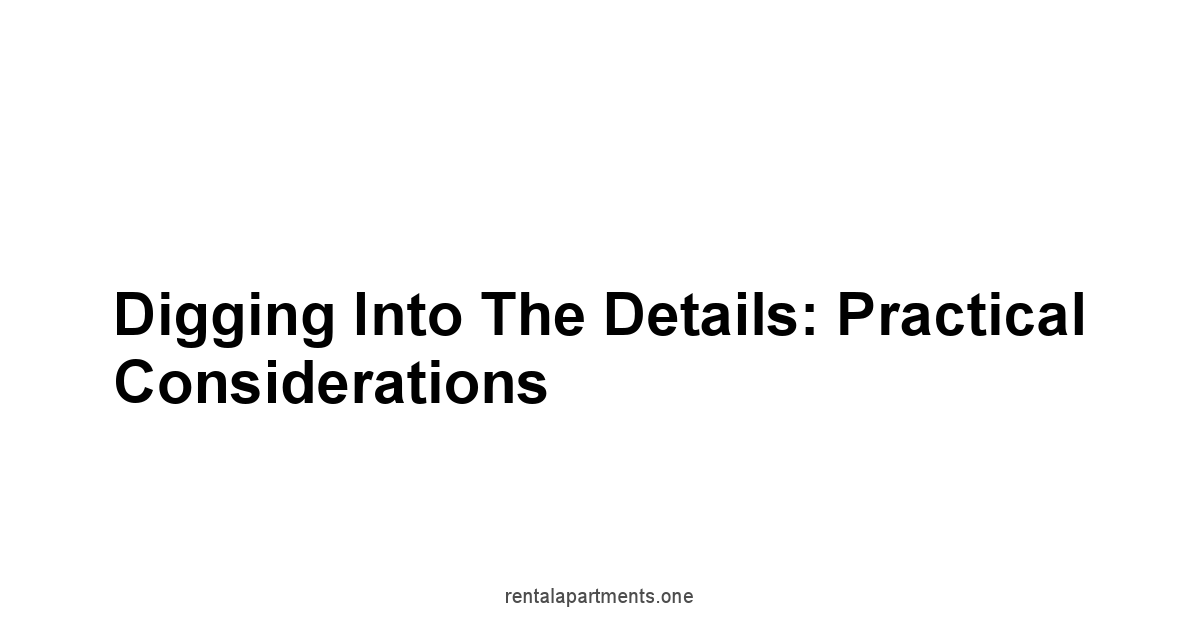
Beyond the first impressions, you need the hard facts. It’s not just about a feeling.
This is where you need to roll up your sleeves and check the important things—the details that will affect your day-to-day life.
Things like how easy it is to get groceries, how far you have to walk to catch the bus, and if you can find a parking spot.
These practicalities are where a place proves itself or fails.
Don’t skip these, they are as important as a place looking good.
These are the details that will make or break your time in the neighborhood.
Is it easy to walk to the store? Can you get to work without hassle? Is it a safe place to come home to at night? These are the questions to answer before you sign a lease.
A place might look nice, but if it’s a nightmare to live in because of these practicalities, it’s not the right fit. It’s time to dig in.
Walkability: Stores and Essentials
Walkability, it’s the measure of a neighborhood’s heart.
Can you walk to the store, to the coffee shop, to get a bite to eat? A walkable neighborhood feels alive and connected.
It’s about the convenience, yes, but it’s more than that, it’s about being part of the community.
It’s about stepping outside your door and feeling like you’re in a real place.
Don’t just look at the map. Walk the streets.
See how long it takes to get to the basics: the grocery store, the pharmacy, a place to have a coffee.
A high walk score makes a big difference in the day to day experience.
Check if the sidewalks are easy to use and if crosswalks are safe.
It’s more than just reaching your destination, it’s about the journey. It needs to be practical and comfortable.
- Grocery Stores: How close is the nearest grocery store?
- Pharmacies: Are there any nearby pharmacies?
- Restaurants/Coffee Shops: How close are places to eat and drink?
- Other Essentials: Are there banks, dry cleaners, and other basic necessities nearby?
- Sidewalks: Are the sidewalks in good condition?
- Crosswalks: Are they easy to use and well-marked?
- Overall: Can you easily accomplish most errands on foot?
| Type of Business | Distance and Accessibility |
|---|---|
| Grocery Store | e.g., 5-minute walk |
| Pharmacy | e.g., 10-minute walk |
| Restaurants/Coffee | e.g., Several within 5-minute walk |
| Other Essentials | e.g., Close by |
- Walk Score: Look up the neighborhood’s walk score on websites like Walk Score.
- Route Quality: Are the walking routes well-lit and safe?
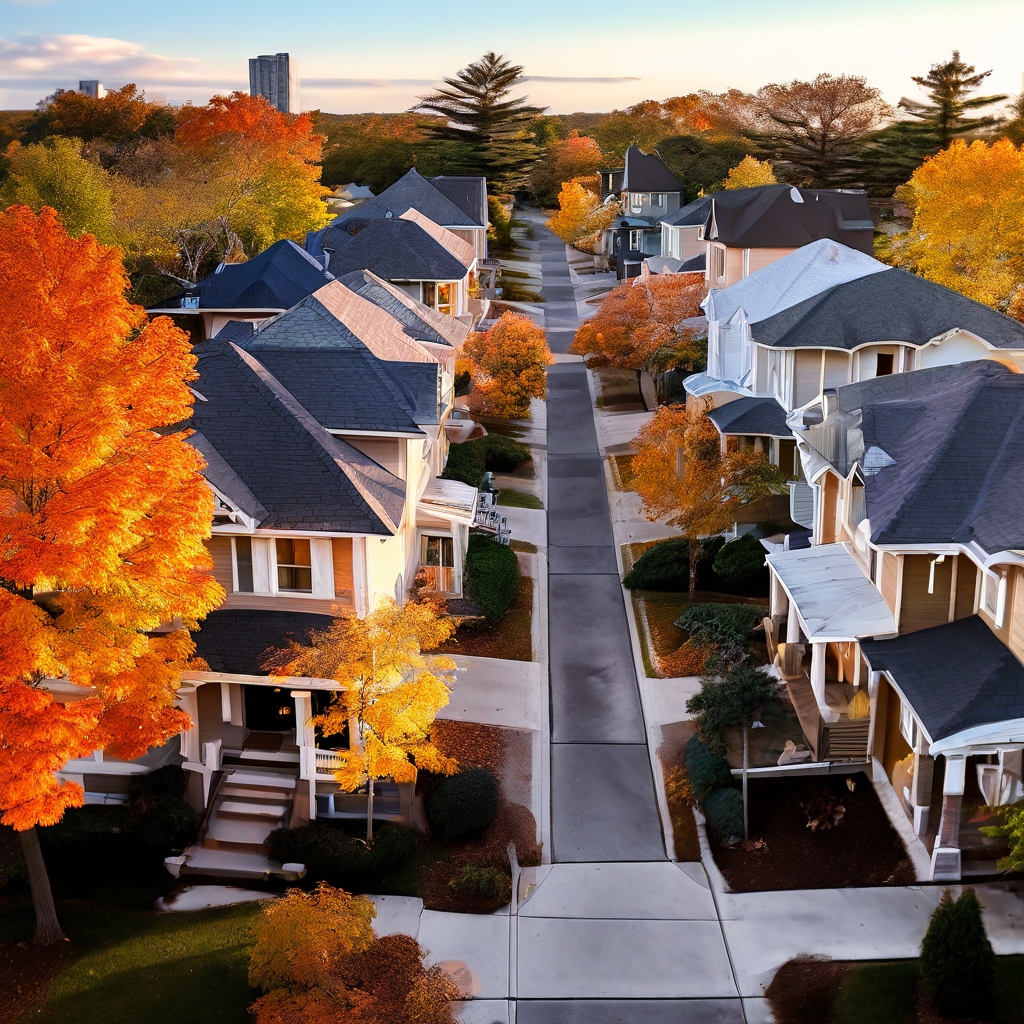
Public Transit: Buses, Trains, and Accessibility
Public transit, it’s your lifeline to the rest of the city.
If you don’t have a car, or you prefer not to use it, you need to know how easy it is to get around.
It’s about being able to get to work, to see friends, to do the things you want to do.
Look beyond the bus stop down the street, you need to know how reliable it is and where it goes.
Check the routes, check the times, check the frequency. Don’t just take their word for it—try it out.
Time how long it takes to get to a few places you’ll need to go. Knowing how the bus or train works is important.
A good public transit system can open up a lot of options, giving you more access to everything the city has to offer.
- Bus Stops: How close are the nearest bus stops?
- Train Stations: Are there any train stations nearby?
- Route Options: What routes are available, and where do they go?
- Frequency: How often do buses or trains come?
- Reliability: Are the public transportation options known for being on time?
- Accessibility: Are the bus and train stops accessible for all individuals?
| Transit Type | Distance | Frequency | Reliability |
|---|---|---|---|
| Bus | e.g. 2 mins | e.g., every 15 min | On-time |
| Train | e.g. 10 min | e.g., every 30 min | Consistent |
- Map Routes: Use online transit maps to determine potential routes.
- Peak Hours: Check transit during busy commute times.
- Weekend Service: See how transit schedules change on weekends.
Parking: Availability and Rules
Parking, it’s a headache in most cities.
If you have a car, you need to know what you’re getting into.
Is it street parking only? Is there a garage, and how much does it cost? It’s about knowing where you’ll be able to park and how difficult it will be.
A nightmare for parking can turn the simplest trip into a big hassle, especially if it’s not something you plan for before moving in.
Look around, day and night. See how full the streets are. Check for parking permits or any rules that apply.
A place with good parking makes your life a lot easier.
Don’t assume, check and make sure you know the score before signing anything.
A place might seem great until you spend 30 minutes every night looking for a spot to park.
- Street Parking: Is it available, or is it restricted?
- Parking Lots: Are there nearby parking lots, and how much do they cost?
- Permits: Are there parking permit requirements?
- Garages: Are there garages available, and at what cost?
- Time Limits: Are there time limits for parking on the street?
- Ease of Parking: How difficult is it to find a parking spot, especially during peak hours?
| Parking Type | Availability | Cost | Restrictions |
|---|---|---|---|
| Street Parking | e.g., Limited | Free/Metered | e.g., Time Limits |
| Parking Lots | e.g., Nearby | e.g., $10/day | None |
| Permit Parking | e.g., Required | e.g., $50/month | Permit only |
| Garage Parking | e.g., Available | e.g., $150/month | Assigned Space |
- Peak Parking: Observe parking during peak times to gauge availability.
- Weekend Parking: Weekends might have different parking situations.
- Overnight Parking: Check if overnight parking is available and what the rules are.
Safety: Crime Rates and Security
Safety, it’s a basic need.
You need to know if you’ll feel safe walking home at night or letting your kids play in the street.
It’s not just about avoiding trouble, it’s about feeling secure in your own neighborhood.
A place that doesn’t feel safe is not a place you want to call home.
You want to lay your head down at night and not worry.
Check the crime rates, talk to neighbors, keep your eyes open.
Are the streets well lit? Are there signs of vandalism or gang activity? These things tell a story about the place.
A safe neighborhood is one where people feel comfortable.
It’s not just about data, it’s about your gut feeling. You should feel a sense of peace.
- Local Crime Rates: Research local crime statistics.
- Street Lighting: Are the streets well-lit at night?
- Signs of Vandalism: Are there signs of graffiti, broken windows, or other vandalism?
- Local Police Presence: Is there a visible police presence?
- Neighborhood Watch: Is there an active neighborhood watch group?
- Personal Perception: Do you feel safe in the area, both during the day and at night?
| Safety Factor | Description |
|---|---|
| Crime Rates | Local crime statistics |
| Street Lighting | Well-lit areas at night |
| Vandalism | Signs of graffiti or damage |
| Police Presence | Visibility of law enforcement |
| Neighborhood Watch | Active community group |
| Personal Safety | Feeling safe in the area |
- Crime Map: Use online crime mapping tools to see reported incidents.
- Talk to Locals: Ask residents about their experiences with safety in the area.
- Nighttime Check: Walk around at night to see how you feel about the area’s safety.
Local Schools: Even if You Don’t Have Kids
Local schools, even if you don’t have kids, they matter.
A good school district is a sign of a strong community.
It’s about the investment people have in the future of the place.
Good schools usually mean higher property values and a greater sense of community pride. It affects everyone, not just parents.
Research the schools, read the reviews, talk to parents.
A good school district usually leads to a well maintained environment.
A neighborhood where people care about education is usually a better neighborhood overall.
This will be a good sign for the general experience you’ll have in the neighborhood, regardless if you have kids yourself.
- School Ratings: Research the ratings and reviews of local schools.
- School District Boundaries: Check which school district the neighborhood belongs to.
- Proximity to Schools: How close are the schools to the neighborhood?
- School Performance: Look at test scores and graduation rates.
- School Programs: What types of programs are offered at the schools?
- Impact on Property Values: How do the local schools influence home values?
| School Factor | Details |
|---|---|
| School Ratings | Reviews and test scores |
| District | Assigned school district |
| Proximity | Distance to local schools |
| Performance | Test scores and graduation rates |
| Programs | Extra-curricular and academic programs |
| Property Values | Impact of schools on local property values |
- School Websites: Visit the websites of local schools to learn more.
- Parent Reviews: Look at online reviews from parents of local students.
- District Data: Check the school district’s website for information on performance.
Understanding the Community: The People and Culture
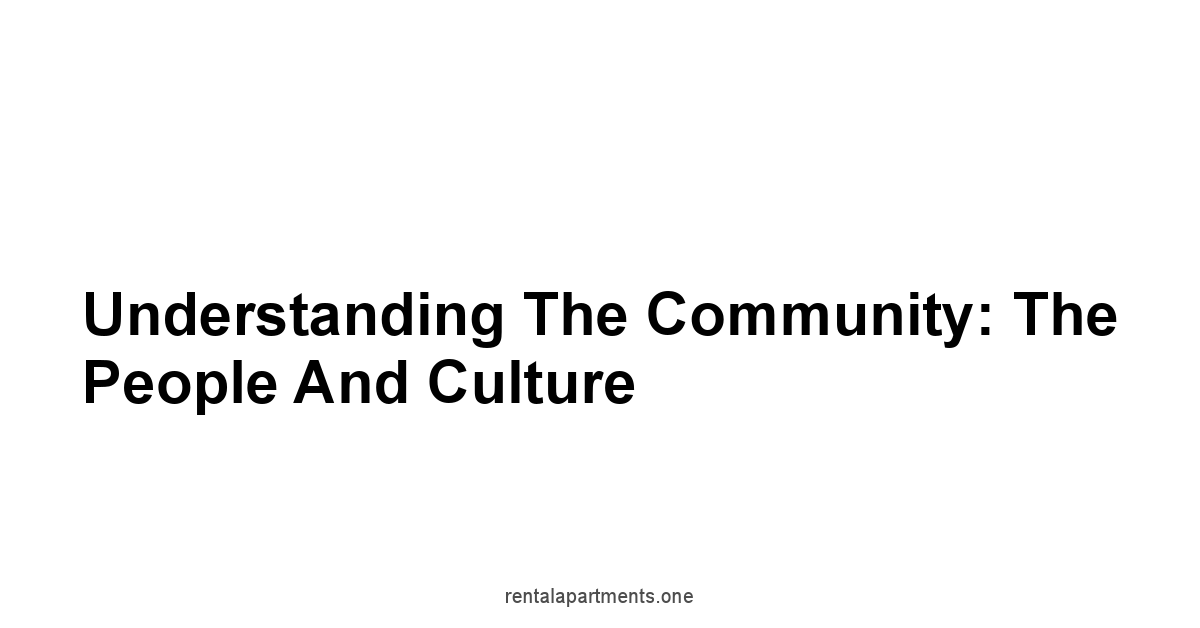
A neighborhood is more than just streets and buildings, it’s the people, the culture, the life that is inside of it.
It’s about who you see at the coffee shop, the events you might stumble upon, and the general feeling of the place.
Knowing your neighbors is knowing the real vibe of the community.
It’s more than just a list of amenities or stats, it’s the human aspect that can make or break a place.
It’s like a city has many different hearts, and each neighborhood is a different beat.
You need to know what kind of beat you’re stepping into.
Are there local gatherings that bring the place to life? Is there a local business that everyone supports? Are the people open and friendly? These are the signs of a healthy, vibrant neighborhood.
It’s about figuring out if this is a community you want to be a part of.
Local Businesses: What’s Available and Accessible
Local businesses, they’re the backbone of a neighborhood.
They’re the places where you see the people who live here, the places you get your morning coffee and do your shopping.
They aren’t just stores, they are a part of the community’s identity.
They often bring a local flavor that chain stores can’t. They give the place its character.
Take a look around, what’s nearby? Is it a mix of unique stores or just the usual chain establishments? Are they within easy walking distance, or will you need to drive? Support for local business shows commitment to the neighborhood and its residents, and will help those businesses thrive, creating a more vibrant community overall.
It’s always good to know where the heartbeat of a place is.
- Types of Businesses: What kinds of local businesses are in the area e.g., cafes, bookstores, boutiques, local markets?
- Proximity: How close are they to your potential home?
- Accessibility: Are they easily reachable by walking, biking, or public transport?
- Uniqueness: Do they offer unique products or services?
- Hours of Operation: Are their hours convenient for you?
- Community Support: Do the local businesses seem well-supported by the community?
| Business Type | Proximity | Accessibility | Uniqueness |
|---|---|---|---|
| Cafes | e.g., 5 min walk | Walkable | Locally owned |
| Bookstores | e.g., 10 min walk | Walkable | Independent |
| Boutiques | e.g., 2 min drive | Easy to reach | Unique items |
| Local Markets | e.g., 7 min bike | Bike friendly | Farm fresh |
- Business Hours: Check the hours of operation to ensure they suit your schedule.
- Accessibility Check: See if the businesses are easily accessible by walking or transit.
- Support Local: Look for community-supported businesses that are part of the neighborhood’s identity.
Community Events: Festivals and Gatherings
Community events, they’re where a neighborhood comes alive.
Festivals, farmer’s markets, street fairs – these are the times when people come together.
It’s about sharing experiences and building a stronger community.
It’s not just about entertainment, it’s about feeling like you’re part of something.
These events tell you how much the residents of the area care about the place that they live.
Look around, is there a calendar of events? Do you see flyers posted for neighborhood gatherings? A place with regular community events feels more connected and is often more involved.
A place that hosts regular events is usually more vibrant overall.
It makes living there a more fulfilling and enjoyable experience.
- Types of Events: What kinds of events are held in the neighborhood e.g., festivals, farmers markets, street fairs?
- Frequency: How often do these events take place?
- Community Participation: How many people participate in the events?
- Event Calendar: Is there a community calendar listing local events?
- Accessibility: Are the events accessible to everyone?
- Community Spirit: Do the events foster a sense of community pride?
| Event Type | Frequency | Participation Level |
|---|---|---|
| Festivals | e.g., Annually | High |
| Farmers Markets | e.g., Weekly | Moderate |
| Street Fairs | e.g., Monthly | Moderate to High |
| Community Gatherings | e.g., Quarterly | Moderate |
- Event Posters: Check community bulletin boards for flyers and event schedules.
- Social Media: Look for local neighborhood groups on social media that may list events.
- Community Calendar: See if there is a community calendar that lists local events.
Demographics: Understanding the Local Population
Demographics, it’s about the people who make up the neighborhood.
It’s not about judging, it’s about understanding who you will be living alongside.
Age, ethnicity, family size – these things give you clues about what the community is like.
A place can feel very different depending on the people who live there. It is good to know who you will be living around.
Take a look around: is it a young professional crowd, families with kids, or an older population? Does the neighborhood have a diverse background? It’s about seeing if the neighborhood matches what you are looking for in terms of a community.
This is more than statistics, it’s about the feel of the place.
It’s about seeing if this is a community you will fit in.
- Age Distribution: What is the age range of residents in the neighborhood?
- Ethnicity: What is the ethnic diversity of the area?
- Family Size: What is the average family size?
- Income Levels: What are the average income levels of residents?
- Education Levels: What are the education levels of the population?
- Occupations: What types of jobs do people in the neighborhood hold?
| Demographic | Description |
|---|---|
| Age Distribution | Age range of residents |
| Ethnicity | Ethnic diversity of the area |
| Family Size | Average household size |
| Income Levels | Average income of residents |
| Education | Education levels of residents |
| Occupations | Types of jobs held in the area |
- Census Data: Use census data to find out key demographics.
- Community Reports: Look for local reports about the neighborhood’s demographics.
- Local Observations: See if the observations match demographic data.
Talking to Residents: The Best Intel
Talking to residents, it’s the best way to get the real story.
They know the quirks, the things that aren’t in any brochure or website.
It’s like talking to a good source on a story, a person on the inside.
Their insights can tell you about the things you can’t learn from just observing the street.
Don’t be afraid to strike up a conversation. Ask about what they like or dislike about the area. Their perspective can be invaluable.
It’s about more than just hearsay, it’s about getting the real feel for the place, the honest take on living there.
They can tell you things about a place you just wouldn’t find out any other way.
- Approachability: How open are the residents to conversations?
- Honesty: Do they give you honest, unfiltered opinions?
- Local Knowledge: Do they know the best spots or hidden gems of the neighborhood?
- Community Concerns: What do they identify as the main issues or challenges of the neighborhood?
- Personal Experiences: What are their personal experiences with living in the neighborhood?
- Reliability: Do they seem like trusted sources of information?
| Resident Insights | Description |
|---|---|
| Approachability | Openness to talking |
| Honesty | Truthful opinions |
| Local Knowledge | Know the neighborhood well |
| Community Concerns | Issues and challenges |
| Personal Experience | Experience of living there |
| Reliability | Trusted sources |
- Timing is Key: Try talking to people when they’re relaxed.
- Start with Questions: Ask open-ended questions to encourage conversation.
- Listen Carefully: Pay attention to their body language and tone.
Testing the Waters: Experiencing the Neighborhood
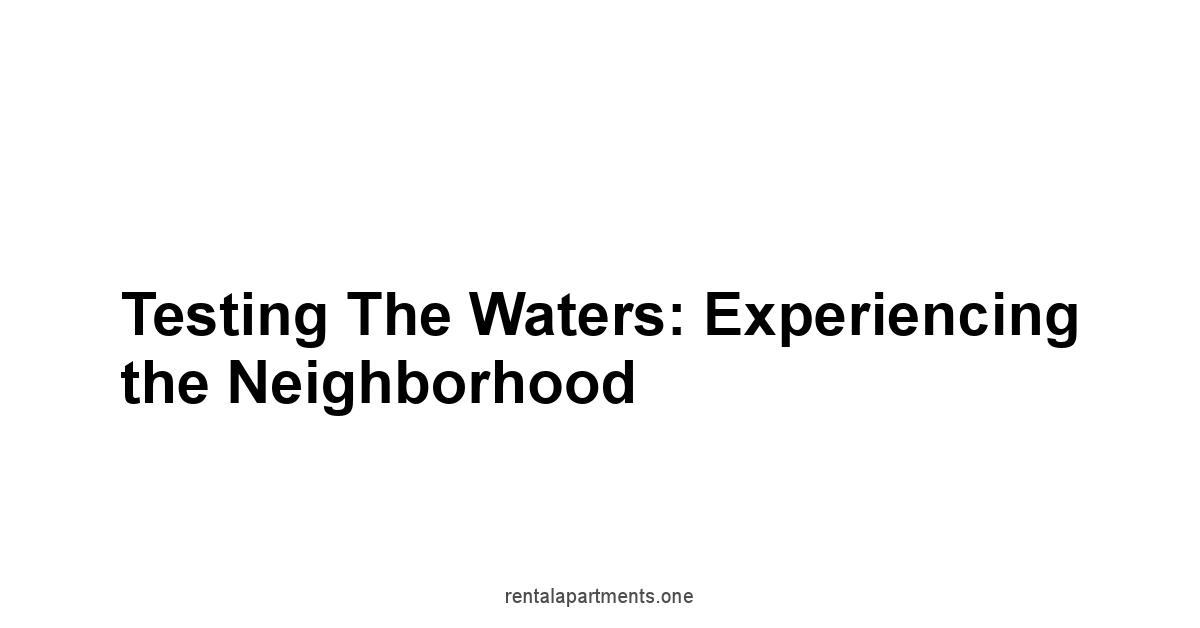
Once you’ve checked out the street, the details, and the people, it’s time to really experience the neighborhood. It’s not enough just to visit once.
You need to spend time there, to see how it feels at different times, under different conditions. This is about putting the place through its paces.
It’s about seeing if it really fits, and if this is a place that you can call home.
It’s like testing out a new car, you have to drive it on different roads at different speeds. It’s the same with a neighborhood.
Walk around at night, bike around on the weekend, try the local coffee shops.
It’s about engaging all your senses and feeling the rhythm of the place.
You want to make sure that the place works for you, every day of the week.
Visiting at Different Times: Morning, Evening, Weekends
Visiting at different times, it’s like seeing a person in different lights.
A place can be quiet in the morning, but busy in the evening.
You need to see how it feels at various times to really know it.
A neighborhood is not a static thing, it changes with the clock.
Make sure you don’t just see it at a convenient time.
Go back in the morning rush, in the quiet evening, and during the busy weekend. Each time of day tells a different story.
This helps you understand if the neighborhood’s pace is right for you, and how it will affect your daily life.
It’s about seeing how you’ll fit in during the regular hustle of daily life.
- Morning Rush: What is the noise and traffic level during the morning commute?
- Daytime Activity: How active is the neighborhood during the day?
- Evening Calm: How quiet does the neighborhood become in the evening?
- Weekend Vibe: How does the weekend differ from weekdays?
- Nighttime Atmosphere: How does the area feel at night?
- Consistency: How consistent is the feeling of the neighborhood at various times?
| Time of Day | Typical Activities and Atmosphere |
|---|---|
| Morning | Commute, people going to work/school |
| Daytime | Business open, people out and about |
| Evening | Quiet, people returning home |
| Weekend | Relaxed, people engaging in local events |
| Night | Quiet with low noise levels |
- Weekday vs. Weekend: Notice how the neighborhood changes during the week and the weekend.
- Rush Hour: Check noise levels, traffic flow, and activity at rush hour.
- Nighttime Visit: Visit at night to check the lighting, safety, and noise levels.
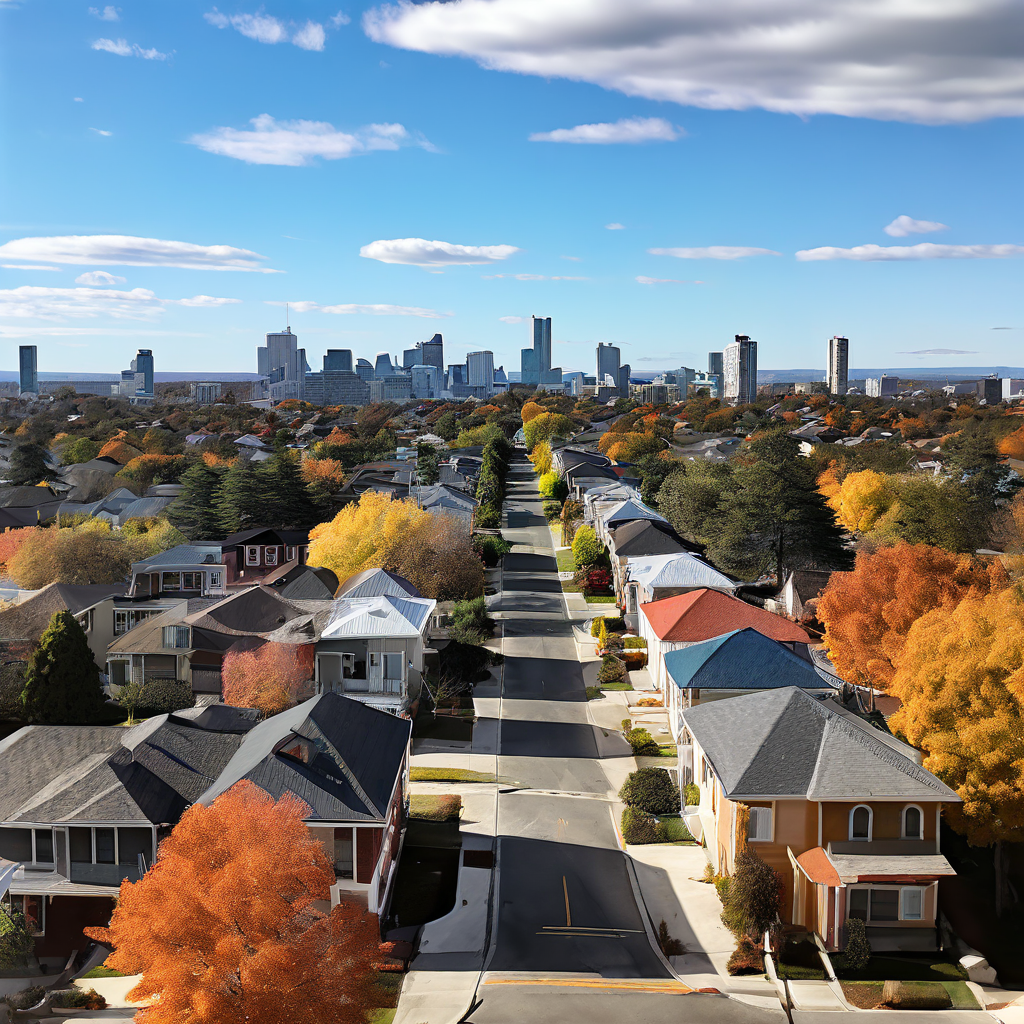
Walking or Biking: See It From a Different Angle
Walking or biking, it changes the way you see things. It’s slower, more intimate.
You’re not just passing through, you’re part of the street, connected to the pace of the place.
This is how you really get to know a neighborhood, not just driving through in a car.
Leave the car behind. Walk the streets, bike the paths.
You will notice different details, sounds, and the overall feeling of the neighborhood.
This is how you find those small things that really make a neighborhood unique.
It’s about noticing the texture of a place in a much more personal way.
- Explore Sidestreets: Discover the hidden alleys and local roads.
- Notice the Details: Pay attention to architecture, gardens, and local details.
- Feel the Pace: Experience the neighborhood’s rhythm and movement.
- Discover Hidden Gems: Find local businesses, parks, or other unique features.
- Assess Walk/Bike-Friendliness: Determine how comfortable it is to walk or bike in the area.
- Sense of Place: Get to experience how it feels to be there.
| Action | Senses Engaged |
|---|---|
| Walking | Sight, Smell, Touch, Sound |
| Biking | Sight, Sound, Movement |
- Bike Paths: Look for bike paths in the area to determine how bike-friendly it is.
- Walking Routes: Walk from the apartment to the nearest stores.
- Safety Check: How safe is it to walk or bike on the streets?
Trying the Local Spots: Restaurants and Coffee Shops
Trying the local spots, it’s like tasting the flavor of the neighborhood.
Restaurants and coffee shops, they’re the places where people gather.
These places tell you about the food that is local and give you a chance to meet the people who live there.
It’s not just about the food, it’s about the experience, and about how it all comes together.
Pick a few places that look interesting, or that locals recommend.
Try the coffee, have a meal, just sit there and watch the world go by.
It’s a way to immerse yourself in the neighborhood, to feel its pulse.
These spaces give a sense of how friendly and welcoming the place might be. They bring life to a neighborhood.
- Variety of Choices: Does the neighborhood have a good selection of restaurants and coffee shops?
- Quality of Food: How is the food and drink quality in local places?
- Atmosphere: What’s the atmosphere and feel of the local establishments?
- Customer Service: How is the customer service in these places?
- Local Favorites: What are the local’s favorite restaurants and coffee shops?
- Community Hubs: Do these spots act as meeting places for the community?
| Dining Type | Vibe | Quality |
|---|---|---|
| Restaurants | Casual, Friendly | High |
| Coffee Shops | Relaxed, Energetic | High |
- Local Recommendations: Ask residents for their favorite spots.
- Online Reviews: Read online reviews for more info about local places.
- Observe the Crowd: Look at who frequents these places.
Using Your Senses: Listen, Watch, and Feel the Area
Using your senses, it’s the best way to really know a place.
Not just looking, but also listening, smelling, and feeling the area.
It’s about engaging all your senses and getting an overall feel of the neighborhood.
You want to use all of your senses and to fully feel the neighborhood that you might call home.
Close your eyes for a second.
What do you hear? What does the air smell like? What’s the feeling of the place on your skin? These sensory details make up the character of a place.
You’re not just evaluating it, you’re experiencing it.
You’re taking it all in and getting a good sense of its unique character.
- Listen: What are the predominant sounds of the neighborhood?
- Watch: What kind of activity do you see happening?
- Smell: What are the typical scents of the neighborhood?
- Feel: What is the overall feeling or atmosphere of the area?
- Observe the People: How do people interact with each other in the area?
- Overall Sensation: What is the complete sensory picture of the place?
| Sense | Observations |
|---|---|
| Listen | Sounds of traffic, nature, people |
| Watch | Visual activity, people and streets |
| Smell | Scents of food, plants, and air |
| Feel | The overall feeling, and vibe |
- Sensory Check: Take some time to observe the neighborhood by actively using your senses.
- Time of Day: Check how the sensory experience varies at different times of day.
- Gut Feeling: Pay attention to the overall feeling the area gives you.
Conclusion
In the end, evaluating a neighborhood before renting isn’t about ticking boxes, it’s about finding a place that resonates.
It’s about the feeling of the street, the rhythm of the place, the character that only reveals itself when you take the time to really look.
The numbers and the data, they’re just a part of the story, the real story is found in the quiet moments, in the people you pass on the street, and in the sense that you get from just being there, it’s what they call the gut feeling and it’s more important than you might think.
Statistics can tell you about crime rates and school scores, but they can’t tell you about the feeling of walking home late at night, the sense of community, or the friendliness of the neighbors.
You can know the number of restaurants, but you’ll only know if those restaurants feel right for you by trying them out.
It’s important to check the box for a good school if you have kids, but it’s just as important to check the box for a place where you can feel at home.
It’s a matter of being thorough, making sure all of your bases are covered, and that you feel safe, happy, and welcome.
Remember to use all your senses.
Look beyond the surface, listen to the sounds, and feel the energy of the place.
Walk the streets, explore the corners, talk to the people. It’s about being engaged, present, and curious.
It’s about getting a true sense of place that is more than just a list of pros and cons, it’s about an evaluation of the overall lifestyle of that place.
It’s about knowing if this is a place where you can live your life, not just a place to sleep at night.
Finding the right neighborhood is like finding the right pair of shoes, it’s a personal journey.
It’s not just about numbers, it’s about feeling comfortable, secure, and happy.
It’s about finding a place that fits you and that gives you a sense of belonging.
Take your time, be thorough, and trust your instincts, the right neighborhood is out there waiting.
Do your research, pay attention to the details, and more importantly, make sure that it feels right to call it home.
Frequently Asked Questions
How important is the first impression of a neighborhood?
It’s like a good punch, it hits you hard and leaves a lasting mark.
You need to feel the place, sense what it’s really like. Trust your gut.
What should I look for when evaluating street condition?
Cracks in the pavement, overflowing bins, they’re the first lines of a story.
Are the sidewalks easy to navigate? Are the streetlights working? The way people care for the street shows how they care for the neighborhood.
How should I assess noise levels?
Noise is more than just sound, it’s the rhythm of the place. Listen at different times of day.
Constant traffic or loud neighbors can drive you crazy.
Pay attention to the type of noise, not just the volume.
What do the homes in a neighborhood tell you?
Are they well-kept, or do they look run down? It’s about the basics, are the windows clean, are the gutters clear? Pride in the homes shows pride in the neighborhood.
Why are green spaces important?
They’re the lungs of a place, offering room to breathe.
Parks, trees, open spaces—they give a neighborhood room to step away from the city’s noise. They add a relaxed and alive feel to an area.
What’s the deal with walkability?
Walkability is the measure of a neighborhood’s heart.
Can you walk to the store or a coffee shop? It’s about being part of the community, not just about convenience.
How should I check out public transit?
Check the routes, the times, the frequency. Don’t just take their word for it, try it out.
Knowing how the bus or train works is important for your daily life.
Why should I care about parking?
A nightmare for parking can turn the simplest trip into a big hassle. Look around, day and night.
See how full the streets are and check for parking rules before moving in.
How can I assess neighborhood safety?
A safe neighborhood feels comfortable, not just avoiding trouble, but feeling secure in your own home.
Why should I care about local schools, even if I don’t have kids?
Good schools are a sign of a strong community, impacting property values and creating a sense of community pride.
A place where education is valued is usually a better place to live.
How can local businesses influence a neighborhood?
They’re the backbone of the neighborhood, giving a local flavor that chain stores can’t.
Local businesses are a part of the community’s identity.
What do community events tell you about a place?
Festivals, farmer’s markets, street fairs—they show how much residents care about the place they live.
It’s about sharing experiences and building a stronger community.
How can understanding demographics help?
It’s about knowing who you will be living alongside.
Age, ethnicity, family size—these things give you clues about what the community is like. It’s more about understanding than judging.
Why is talking to residents so important?
They know the real story, the quirks that aren’t in any brochure.
Their insights can tell you about things you can’t learn from just observing the street.
What’s the importance of visiting at different times?
A place can be quiet in the morning but busy at night.
It changes how you perceive the area and if you would fit in.
Why should I walk or bike around the neighborhood?
It changes the way you see things.
You become part of the street, connected to the pace of the place. It’s more intimate than driving through in a car.
Why should I try the local spots?
Trying the local restaurants and coffee shops will help you taste the flavor of the neighborhood and give you a sense of how welcoming the place is.
What do you mean by using all my senses?
Don’t just look, listen, smell, and feel the area.
It’s about engaging all your senses to get a real feel for the neighborhood, and a sense of its character.

